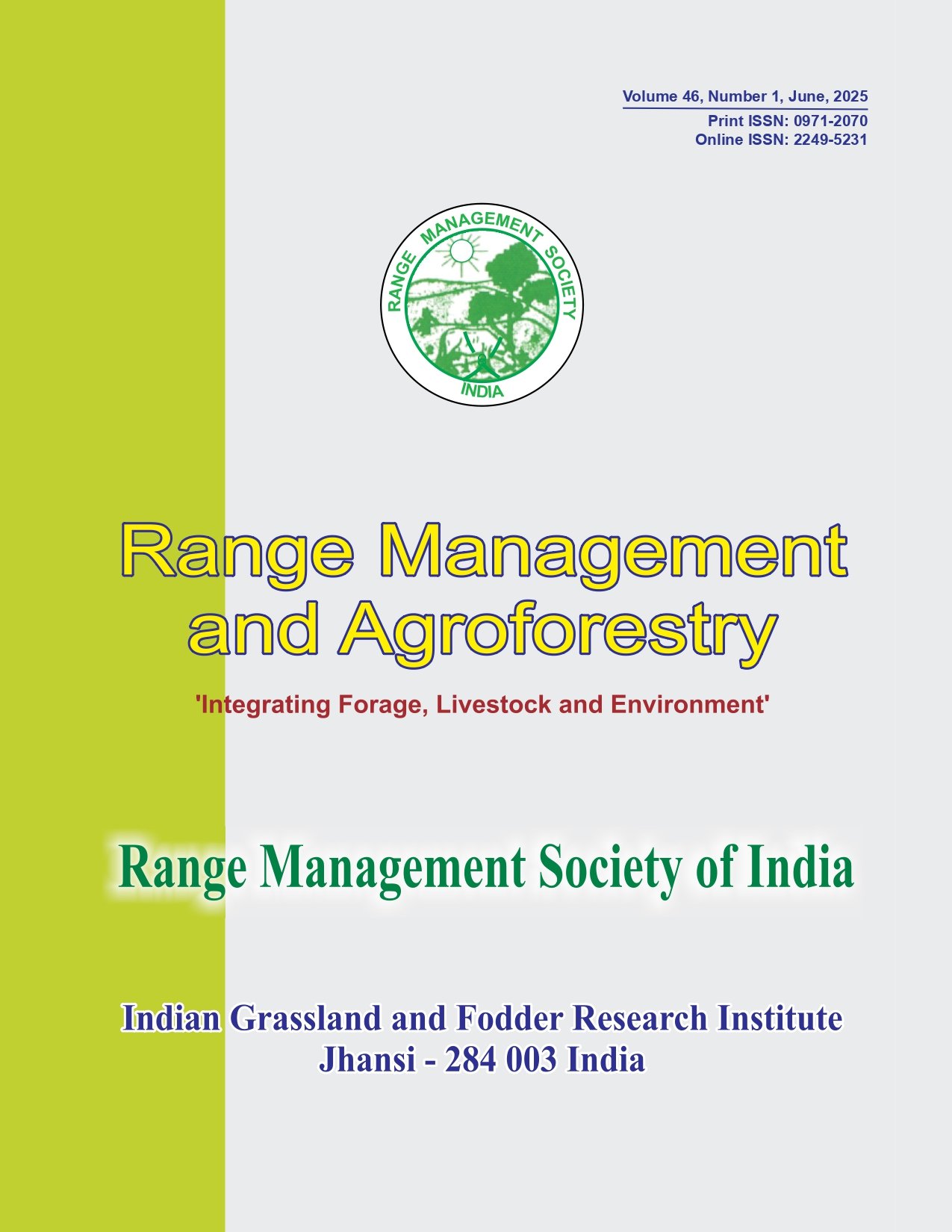Effect of different nutrient management practices on productivity, profitability and nutrient dynamics in forage-based cropping systems under mid-hill conditions of north-western Himalayas
DOI:
https://doi.org/10.59515/rma.2024.v45.i1.13Keywords:
Cropping systems, Organic nutrient management, Natural farming, productivity, fodder yieldAbstract
A field experiment was conducted at the research farm of Fodder Section, CSKHPKV, Palampur, from Kharif 2018 to Rabi 2019-20 to study the effect of different nutrient management practices in forage-based cropping systems. Ten nutrient management practices in two cropping systems were tested in randomized block design with three replications. Integrated nutrient management, i.e., 50% recommended N + 10 t/ha FYM + 10% Jeevamrit and 50% recommended N+ 10 t/ha FYM + 5% Jeevamrit and recommended NPK behaving alike resulted in higher oat green fodder equivalent yield, nutrient uptake (N, P and K) and system productivity of sorghum + pearl millet - oat + sarson/wheat cropping systems. An increase in soil organic carbon content was observed with integrated nutrient management (50% recommended N + 10 t/ha FYM + Jeevamrit) and organic nutrient management (10 t/ha FYM + Jeevamrit) over the initial status at the end of sorghum + pearl millet - oat + sarson/wheat cropping systems. Integrated nutrient management improved available soil nitrogen, phosphorus and potassium contents over the initial values. Significantly higher available soil nitrogen, phosphorus and potassium contents were recorded with integrated nutrient management as well as with recommended NPK through inorganic sources over other treatments comprised of organic and natural farming systems of nutrition in both the cropping systems. Recommended NPK proved most profitable with the highest net returns and benefit-cost ratio in sorghum + pearl millet - oat + sarson/wheat cropping systems. Sorghum + pearl millet - oat + sarson cropping system comprised of all fodder crops resulted in higher productivity and profitability but did not increase soil available nutrient status as compared to sorghum + pearl millet - wheat cropping system comprised of fodder as well as grain crops.








